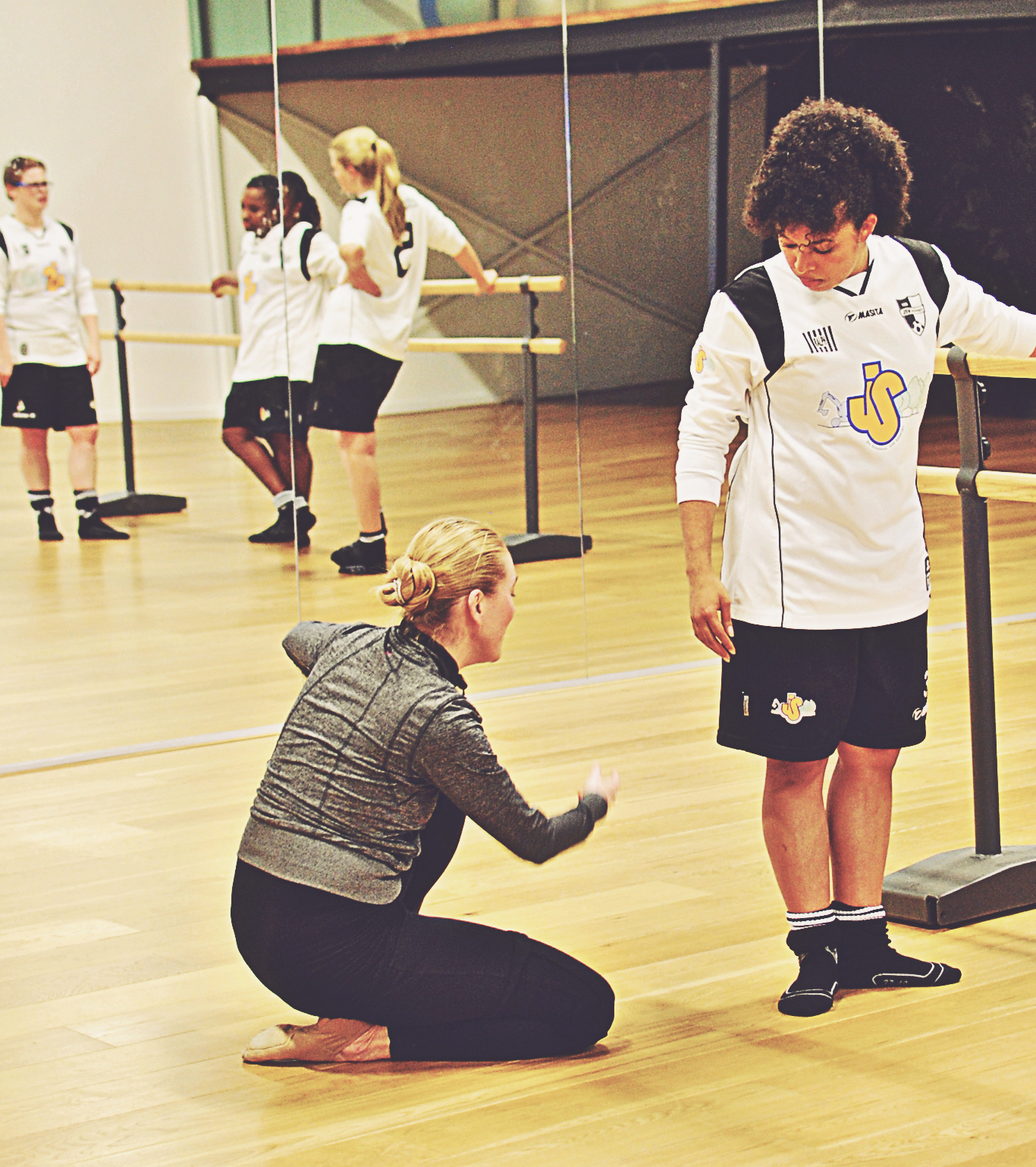Our unique and experimental study ‘Recovery Ballet’ for soccer players and other athletes starts in the beginning of 2015, in close cooperation with the International Academy for Physiotherapy THIM (Nieuwegein, NL). This study is sponsored by the University of Ghent (B).
The research project is divided into three categories:
1. Recovery Ballet, in the context of the rehabilitation process after a soft tissue injury with a prolonged rehabilitation (individual).
2. RB prevention programme for A-selections (special).
3. Special RB programme based on ballet / dance during the performance development for youth players.
Background
Recovery Ballet is based on the ‘symphony of movements’ which means that normally each muscle, muscle group and thus any movement activity has their own harmonious coordination and timing [1]. The philosophy behind the Recovery Ballet Methodology is that an athlete with a temporarily or permanently disrupted movement pattern – regardless of cause – will achieve changed transmission at neuronal and synaptic level in a short amount of time [2]. In soft tissue lesions and overload, movement patterns will change so effectively at a neurological level that a new (pathological) reflex pattern is generated.
Depending on the nature and severity of the injury, an individual RB-program will be composed consisting of different types of dance techniques. The movement patterns to perform are derived from several ballet and dance forms. A brief description:
A. Classical Ballet
This ‘old’ technique is based on clearly defined and described movement patterns. Strictly theoretical, there is the classical ballet technique only one way to perform impeccably. Practice has also shown that the established techniques may be waived without cancelling the indication ‘classic’. Features of classical ballet techniques are:
1. Unscrewing (endehors)
2. Using the length of the muscles and stretching the body in a certain way (fully upright posture / attitude)
3. Both hard and soft movement qualities
4. The element of feeling ‘elevated’ movements being performed on the toes (relevé).
5. Stretching of the foot (point)
B. Modern dance
This is a dance form which is based on the dynamism and processing of opposites as ‘contraction’ and ‘release’ (Graham). Here the spiral turn is around the axial skeleton, flexion of hands and feet as well as parallel leg positions and falling actions, including back fall and maintaining the balance. All movements start from one single point (solar plexus / centre core) which is also a controller of the entered power. The principles upon which modern dance is based have been described as substance (the movement), dynamics, metakinesis (the psychological or mental content of the movement) and form (the result of the movement).
C. Jazz dance
This form of dance is composed eclectically, but important identifying characteristics are a low centre of gravity and a high level of energy. The frequent use of isolation of body parts (arms, legs, head, hands, etc.), movements on the syncopated (music) elements and low to the ground (legs bent / plié) and the use of dynamics are decisive here.
To participate in this research project, please click here for more information and/or sign up by filling out the form below, or email to research@sportsinjurylab.com for more information.
